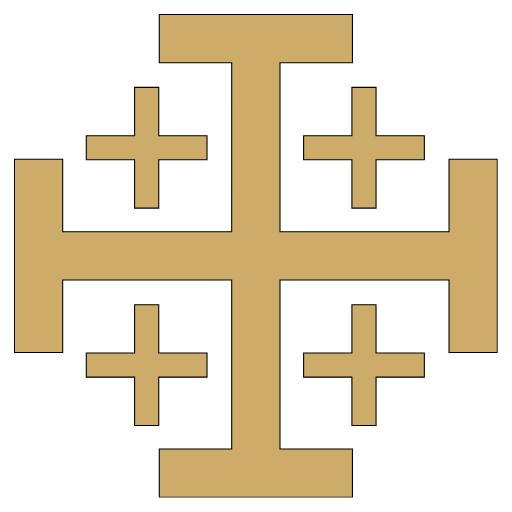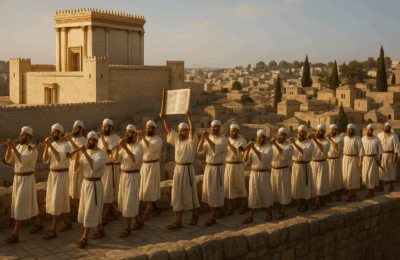Home | Bible Resources | Pentateuch (or the Law)
Genesis | Exodus | Leviticus | Numbers | Deuteronomy
The Pentateuch: Creation. Covenant. Cosmic Conflict.
“In the beginning, God created…” — and from Eden to Egypt, from Promise to Law, the foundations were laid for redemption and restoration. The Pentateuch is the bedrock of the biblical story — the story of a holy God, a chosen people, and the long war against sin, death, and spiritual rebellion.
Introduction
The Pentateuch is the opening act of God’s grand drama — the foundation of everything that follows. It reveals the beginning of the world, the rise of sin, the start of redemption, and the formation of a covenant people through whom blessing would come to all nations. It is the story of how God begins to reclaim what was lost — not just a garden, but glory.
From the first breath of creation to the final sermon of Moses, the Pentateuch (Genesis through Deuteronomy) introduces the major characters, covenants, and conflicts of Scripture. It begins in a sacred garden, where humanity was made to rule under God — and ends on a mountain in Moab, with a redeemed people poised to enter the Promised Land. In between lies the long road of redemption, where God reveals His holiness, extends His grace, and unfolds His purposes through frail yet chosen vessels.
But the Pentateuch is more than origin story — it is cosmic declaration. It unveils the reality that our world is not merely material, but deeply spiritual. It tells of a serpent in the sanctuary (Genesis 3), rebellious sons of God (Genesis 6), and a tower that sparked global exile (Genesis 11). These three spiritual rebellions — Eden, the Watchers, and Babel — form the backdrop for all human brokenness and divine rescue.
In response, God initiates His plan not through empires, but through a man named Abraham. Through this one man and his family, Yahweh will re-inherit the nations He disinherited at Babel (Deut 32:8–9). The rest of the Pentateuch traces that calling — from slavery to deliverance, from law to worship, from rebellion to renewal — all pointing toward a greater Mediator and a better covenant still to come.
Every major theme of Scripture finds its seedbed here:
- Creation and sacred space
- Fall and human depravity
- Covenant and divine election
- Law and priesthood
- Sacrifice and atonement
- Prophecy and typology
- Spiritual war and global mission
To study the Pentateuch is to return to the roots of reality — to walk with Adam, weep with Noah, follow Abraham, stand at Sinai, camp in the wilderness, and listen to Moses’ final charge. It is to hear the voice of Yahweh, call us not just to know the truth, but to walk it out in every generation.
This isn’t just the beginning of the Bible.
It’s the beginning of your story.
“In the beginning, God…” — and in every beginning since, He calls us to walk with Him.
1. Title, Author, and Date
The term Pentateuch comes from the Greek pente (“five”) and teuchos (“scroll” or “book”), referring to the first five books of the Old Testament — Genesis, Exodus, Leviticus, Numbers, and Deuteronomy. In the Hebrew Bible, this section is called the Torah, meaning “instruction” or “law.” Authored by Moses (Exodus 24:4; Numbers 33:2; Deuteronomy 31:9), these books were written between 1446–1406 BC during Israel’s wilderness journey and form the theological and narrative foundation for the entire Bible.
- Author: Moses
- Date: c. 1446–1406 BC
- Original Audience: The redeemed nation of Israel, preparing to enter the Promised Land
- Redemptive Role: Launches the storyline of Creation → Fall → Redemption → Restoration; introduces the covenants, law, and the first shadows of Messiah
Book Stats
| Book | Chapters | Verses | Approx. Word Count |
|---|---|---|---|
| Genesis | 50 | 1,533 | ~38,262 |
| Exodus | 40 | 1,213 | ~32,685 |
| Leviticus | 27 | 859 | ~24,546 |
| Numbers | 36 | 1,288 | ~32,896 |
| Deuteronomy | 34 | 959 | ~28,352 |
2. Purpose and Themes
The Pentateuch reveals the character of God, the sinfulness of humanity, and the beginning of His redemptive plan through covenant. It sets the stage for God’s cosmic reclamation of both His image-bearers and the disinherited nations, through a chosen people, shaped by His Word and presence.
Major Themes:
- Creation, Fall, and Redemption
- Covenant and Kingdom (Abrahamic, Mosaic)
- Law and Grace
- Holiness and Atonement
- Divine Presence (Tabernacle)
- Cosmic Geography and Supernatural Rebellion (Genesis 3, 6, 11; Deuteronomy 32:8–9)
- Seed Promise and Messianic Hope (Genesis 3:15; Deuteronomy 18:15)
Structural Features:
- Narrative–Law alternation
- Chiasms and covenant renewal speeches
- Thematic progression: Creation → Covenant → Nation → Law → Wilderness → Renewal
3. Outline
The Pentateuch unfolds in five books, each developing a stage in God’s redemptive work — from the beginning of all things to the threshold of the Promised Land. It traces the formation of God’s covenant people, the giving of His law, and the promise of future restoration.
A. Genesis — Beginnings: Creation, Covenant, and Conflict
- Primeval History (1–11): Creation, Fall, Flood, Babel
- Patriarchal Narratives (12–50): Abraham, Isaac, Jacob, Joseph
B. Exodus — Redemption and Revelation
- Deliverance from Egypt (1–18)
- Covenant at Sinai (19–24)
- Tabernacle and God’s Dwelling (25–40)
C. Leviticus — Holiness and Worship
- Sacrificial System and Priesthood (1–10)
- Laws of Purity and Atonement (11–22)
- Sacred Times and Covenant Terms (23–27)
D. Numbers — Wilderness and Warning
- Camp Preparation and Census (1–10)
- Rebellion and Wandering (11–25)
- Re-Census and Inheritance (26–36)
E. Deuteronomy — Covenant Renewal and Commission
- Historical Prologue and Review (1–4)
- Exposition of the Law (5–26)
- Blessings, Curses, Future Restoration (27–34)
Canonical Flow: The Pentateuch forms the Torah (Law) section of the Old Testament. It serves as the launchpad for the Historical Books and the theological anchor for the rest of Scripture — culminating in Christ, who fulfills the Law and the Prophets (Matt 5:17; Luke 24:27).
4. Key Themes and Theological Contributions
The Pentateuch provides the foundational doctrines of God’s holiness, humanity’s fallenness, covenantal redemption, and the call to walk with God in every area of life.
Theological Highlights:
- God as Creator and Covenant Lord
- Image-bearing and Human Dignity (Genesis 1:26–27)
- The Sin Problem and Atonement Pattern (Leviticus 17:11)
- Seed Promise and Messianic Foreshadowing
- Law as Tutor and Covenant Guide (Galatians 3:24)
- Sacred Space and Divine Presence
⚔️ Major Rebellions / Turning Points:
- The Edenic Rebellion (Genesis 3)Crisis: A divine being (nachash) tempts humanity; dominion and intimacy are lost.Redemptive Trajectory: Introduces the “seed of the woman” promise (Gen 3:15)
- The Watcher Rebellion (Genesis 6)Crisis: Sons of God transgress boundaries; Nephilim corrupt the land.Redemptive Trajectory: Brings judgment through the flood, preserving Noah’s line.
- The Babel Disinheritance (Genesis 11; Deut 32:8–9)Crisis: Humanity seeks autonomous unity and divine status.Redemptive Trajectory: God divides the nations and chooses Abraham to begin redemption.
📌 Suggested Memory Verse:
Deuteronomy 32:8–9 (LSB) —
“When the Most High gave the nations their inheritance, when He separated the sons of man, He set the boundaries of the peoples according to the number of the sons of God. But Yahweh’s portion is His people; Jacob is the allotment of His inheritance.”
5. Christ in the Pentateuch
The Pentateuch lays the prophetic and typological groundwork for the person and work of Christ — from Genesis to Deuteronomy, the shadows point toward the Savior.
Typological and Prophetic Fulfillment:
- Seed of the Woman → Christ the Serpent-Crusher (Genesis 3:15; Romans 16:20)
- Passover Lamb → Christ our Passover (Exodus 12; 1 Corinthians 5:7)
- High Priest → Jesus our Mediator (Leviticus 16; Hebrews 4–10)
- Bronze Serpent → Christ lifted up (Numbers 21; John 3:14–15)
- Prophet like Moses → Jesus the Greater Prophet (Deuteronomy 18:15–19; Acts 3:22)
Cross-Reference Chart (Typology):
| Type/Event | Fulfillment in Christ |
|---|---|
| Adam (image bearer) | Last Adam (1 Corinthians 15:45) |
| Passover Lamb | Jesus’ sacrificial death (1 Cor 5:7) |
| Tabernacle | God with us in Christ (John 1:14) |
| Priesthood (Aaron) | Christ our High Priest (Hebrews 7) |
| Manna from Heaven | Bread of Life (John 6:31–35) |
| Bronze Serpent | Crucifixion and salvation (John 3:14–15) |
| Promised Prophet | Jesus as ultimate revealer (Acts 3:22) |
6. Historical and Literary Notes
The Pentateuch is both literary masterpiece and theological charter. It reflects the covenant form and sacred worldview of the ancient Near East, while speaking eternal truth.
Genre and Structure:
- Narrative history, legal instruction, covenant treaty, genealogical records
- Follows suzerain-vassal treaty structure (especially Deuteronomy)
Ancient Near Eastern Parallels:
- Creation and flood accounts (Genesis vs. Enuma Elish & Gilgamesh)
- Covenant format (Exodus, Deuteronomy)
- Tabernacle imagery mirrored in heavenly patterns (Exodus 25:9; Hebrews 8:5)
👤 Key Characters:
- Adam – First man, lost dominion
- Noah – Preserver of the righteous line through judgment
- Abraham – Chosen by grace, father of many nations
- Moses – Deliverer, lawgiver, prophet, mediator
- Aaron – First high priest, mediator of worship
- Joshua – Faithful spy and future conqueror
7. Applications for Today
The Pentateuch is not just ancient history — it shapes how believers think, live, and walk today in covenant relationship with the living God.
Discipleship Formation
- Live as image-bearers in sacred relationship
- Pursue holiness in light of God’s presence
- Embrace Scripture as the guide for daily obedience
Worldview and Ethics
- Stand against modern Babels (autonomy, relativism, idolatry)
- Recognize the spiritual battle behind cultural confusion
- Affirm life, marriage, justice, and truth as revealed by God
Leadership and Mission
- Lead with humility, like Moses
- Engage culture as a set-apart people in enemy territory
- Proclaim Christ as the Seed who reclaims the nations
8. Shoe Leather Discipleship Tie-In
This book shows us that…
Walking with God begins in the garden but continues through the wilderness. The Pentateuch invites us into a life of covenantal faithfulness, spiritual awareness, and hope in the coming Redeemer. It reminds us that our lives are not small — they are part of an ancient story of cosmic conflict and divine love.
“The Pentateuch is our introduction to reality — a sacred worldview where every step we take matters, every law points to grace, and every page whispers the promise of a coming King.”






